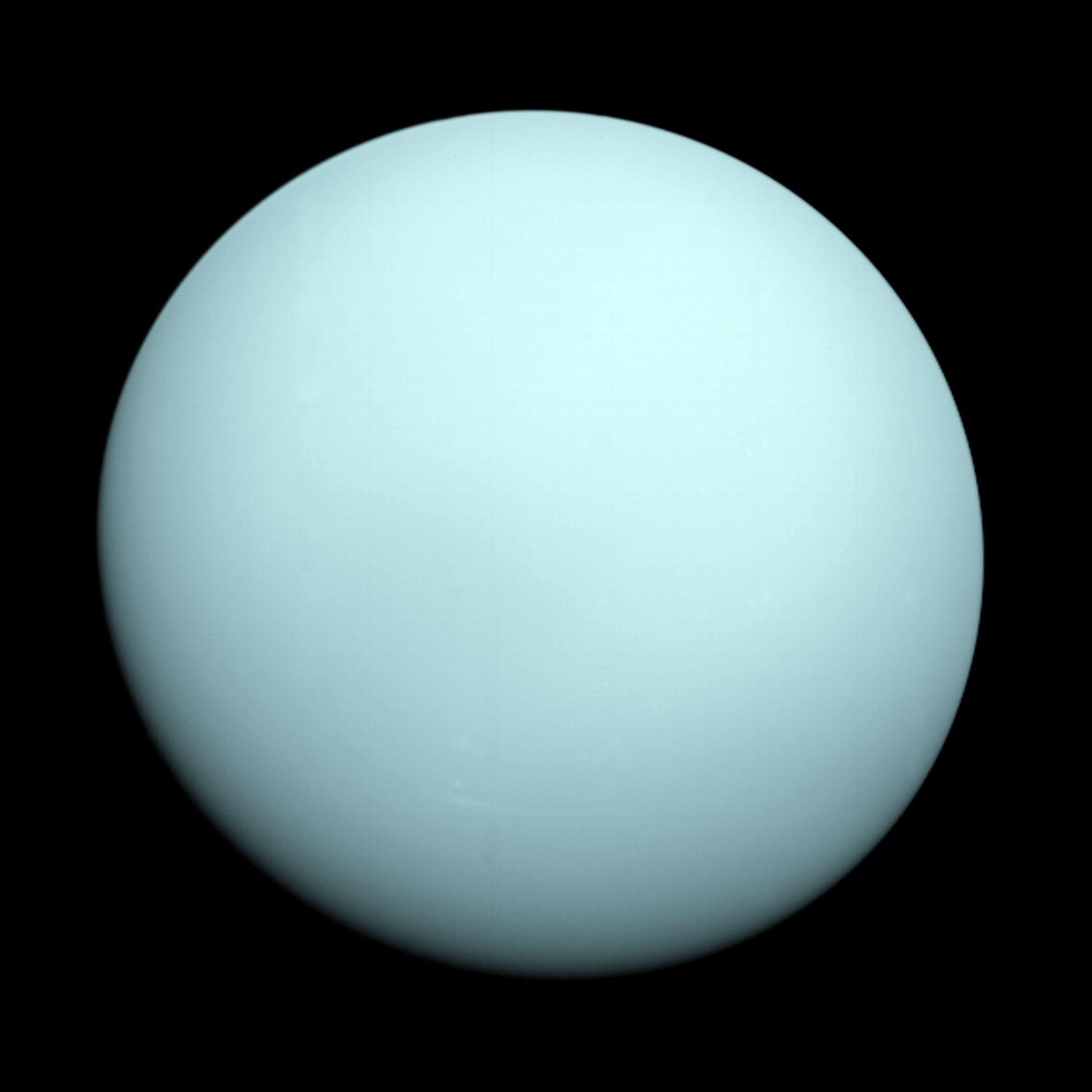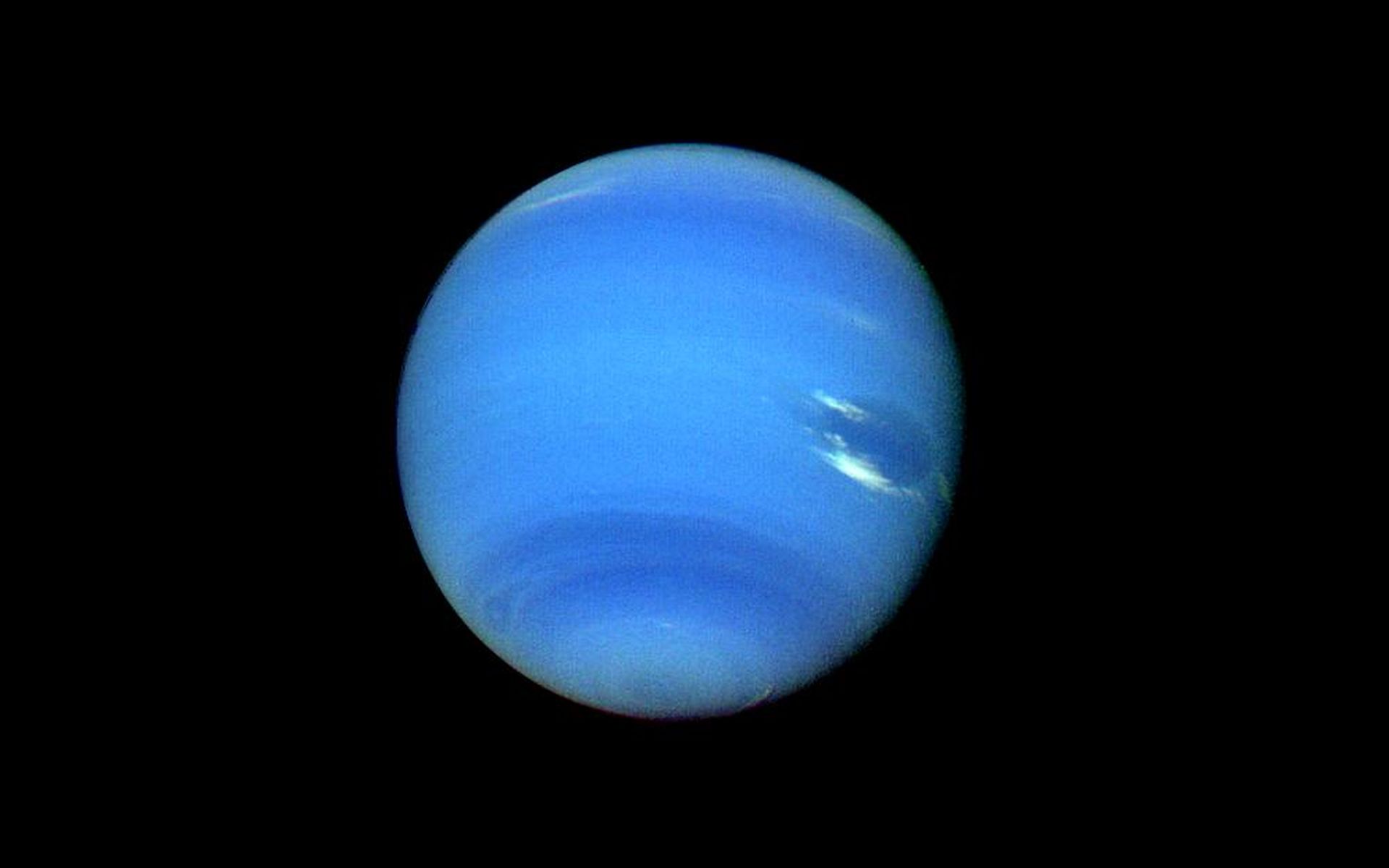Outer Gas Giants
We know from last month that this summer was a splendid time for convenient evening viewing of the two largest gas planets, Jupiter and Saturn. Likewise, this Autumn is a great time for evening viewing of the two remaining gas giants, Uranus and Neptune.
Uranus and Neptune are smaller and more distant than Jupiter and Saturn and are therefore more challenging to locate and observe. Whereas Jupiter and Saturn are easily visible to the naked eye appearing as bright “stars” (currently in the southwest during evening twilight). Uranus hovers just below naked eye visibility for most people, and Neptune is far too faint to be seen without optical aid.
Although relatively small as gas giants go, Uranus and Neptune have diameters that still are four times greater than Earth’s. They are located so far from the sun that their “years” – i.e. orbital period about the sun – are 84 and 165 earth years, respectively.

Uranus was the first planet whose discovery was credited to a single person. All the naked eye planets have been known since antiquity and have been tracked for thousands of years by astronomers from various cultures. Uranus was discovered by Sir William Herschel in 1781 from his backyard garden using a rented telescope. The discovery rocked the astronomical world and as a result Herschel was knighted by the King of England.
During the next century it was discovered that Uranus’ orbit did not follow the orbital path predicted by mathematical models. It was deduced that there was possibly another yet undiscovered planet tugging away at it causing Uranus’ path to deviate. In France, calculations based measurements of the positions of Uranus in the sky led to a predicted location for a mysterious eighth planet. An observatory heard of the prediction and that very night turned its telescope to the spot and discovered the planet Neptune. It was a scientific and mathematical triumph.
Planets whose solar orbits lie beyond Earth’s orbit are referred to as “outer planets.” All four of our gas giants are outer planets. The best time for viewing any planet is when it is closest to us. For outer planets this occurs at a time called “opposition” when the earth is directly between the planet and the sun and two planets are at their closest. It just so happens that at opposition the planet in question is placed best for observation – that is at its highest point in the sky – at around local midnight.

Neptune’s opposition occurred in early September and Uranus will reach opposition on October 27. They will both be well positioned for viewing this Fall season. But knowing where to look will require the use of a finder chart. Online charts may be found by searching the web for something like “Uranus 2019 chart.” A good source of planetary finder charts is In-The-Sky.org. Note that detailed charts may still require you to use a wide field chart or planisphere to help locate and orient the chart field in the sky.
Neptune is currently in the constellation Aquarius the water bearer. It rises at around 6 pm and is well placed for viewing several hours later. Uranus is in the constellation Aries the ram. It rises around 8 pm. Both planets are high enough for viewing by about 10 pm, and later.
Although both are visible in binoculars, a telescope will be required to see their tiny disks. Uranus appears larger, and to my eye is a greenish color, although some people see it as blue. Neptune is a tiny little circular light blue round spot.
Don’t be deceived. Although both are “major planets,” Uranus and Neptune are a challenge to locate and identify. Using low powers to sweep them up is a good idea because your eyepiece will cover more sky ground. But under low power they may appear star like and indistinguishable from field stars. Use a chart and low power to identify candidate stars. Then boost the magnification and look for signs of a planetary disk.
If you’re not equipped for viewing them yourself, you may want to join up at one of the upcoming public events of the Westminster Astronomical Society (WASI). Be aware though that some public events may end before one or the other planet has risen high enough for suitable viewing. A calendar of events is available on the WASI web site at Westminsterastro.org and click on the “calendar” link.
Upcoming WASI events include a planetarium program and observatory viewing at Bear Branch Nature Center and the B.F. Roelke Memorial Observatory on Saturday, October 12. One week later is public viewing at the observatory at Charlotte’s Quest nature center in Manchester. Check the web site for more information and be aware that while observing events are weather permitting, the planetarium is rain or shine.
–Curt Roelle
